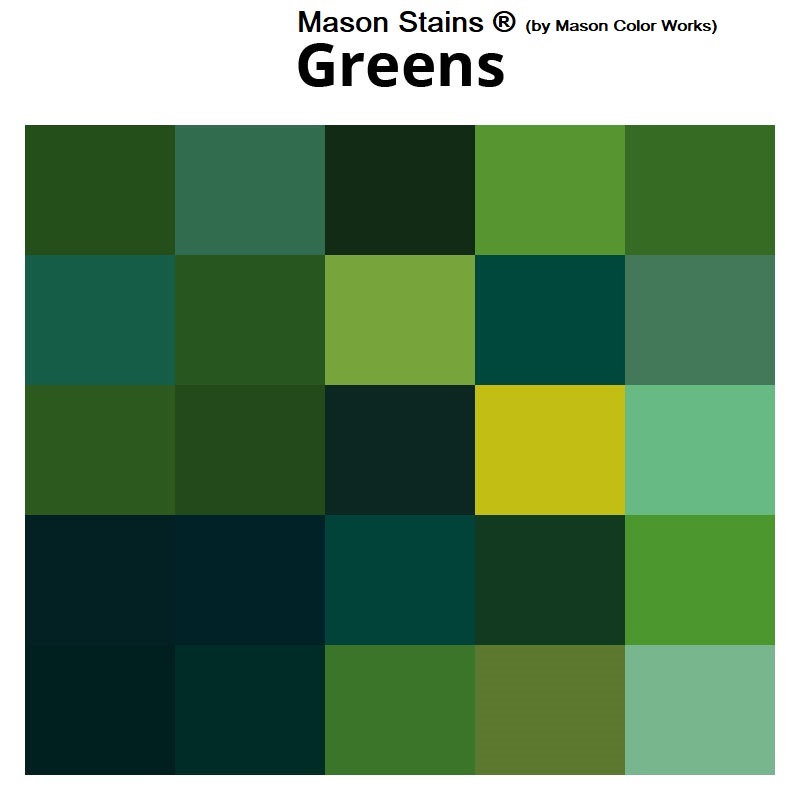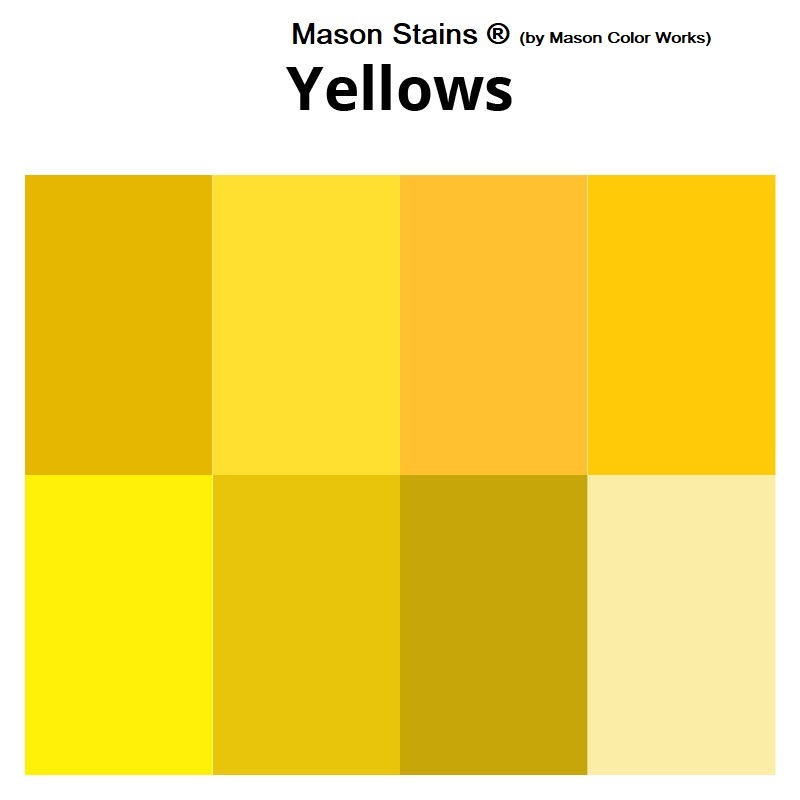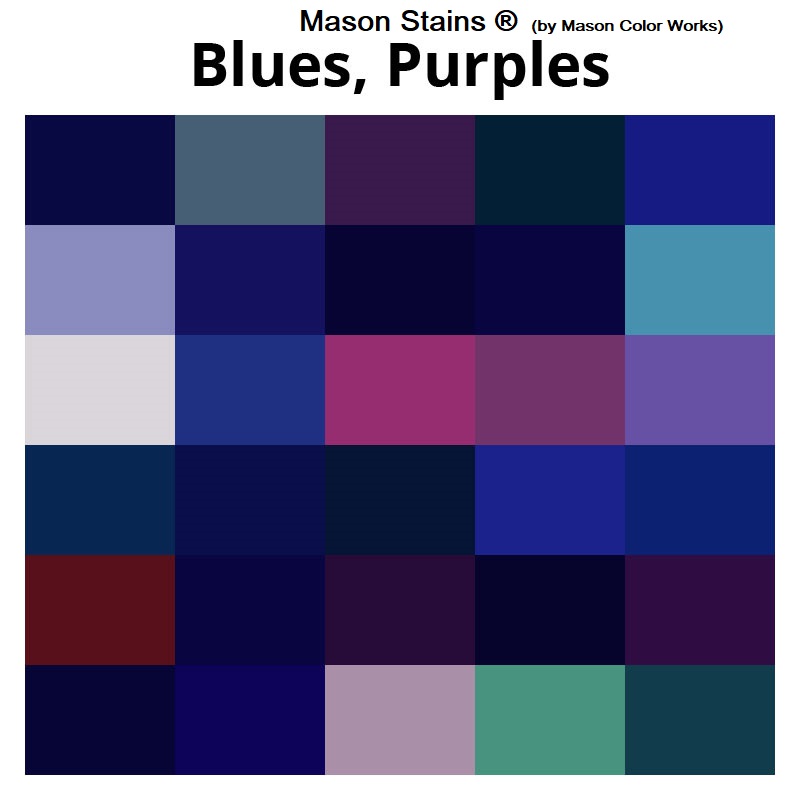
Mason Stains®(by Mason Color Works): Greens
December 22, 2016
Mason Stains®(by Mason Color Works): Yellows
December 22, 2016Mason Stains®(by Mason Colors Works): Blues and Purples
$5.56 – $291.65
Mason Stains® (by Mason Color Works) Ceramic Stains
Definition of a Stain: A stain is essentially an oxide or series of oxides and opacifiers which have been blended together, calcined (or fired), then ground to a 200 or so mesh powder. The reasons for using a stain versus an oxide, etc. are (1) Stability of Color — an important criteria for wall tiles, sanitary ware, etc. (2) Insolubility — an insoluble (in water) stain greatly diminishes the risk in handling wet glazes when dipping or pouring, etc. (3) Color — the fired color of most stains is identical to the raw color because it has already been fired. It is, therefore, easier to use or to mix to achieve another color. It can also be mixed with a variety of medium to turn them into china paints, enamels, silk screen colors, decals, etc.
| 1-5 | 6+ |
| $38.84 | $38.84 |
| 1-4 | 5+ |
| $12.14 | $12.14 |
Key to Composition Chart
- Al Aluminum oxide Al2O3
- B Boric oxide B2O3
- Ca Calcium carbonate CaO3
- Co Cobalt oxide CoO
- Cr Chromium oxide Cr2O3
- Fe Iron oxide Fe2O3
- Mn Manganese dioxide MnO2
- Ni Nickel oxide NiO
- Pb Lead oxide PbO
- Pr Praseodymium oxide Pr6O11
- Sb Antimony dioxide Sb2O3
- Si Silicon dioxide SiO2
- Sn Tin dioxide SnO2
- Ti Titanium dioxide TiO2
- V Vanadium oxide V2O5
- Zn Zinc oxide ZnO
- Zr Zirconium dioxide ZrO2
Reference Notes
1. Can be used as body stain in porcelain at high temperatures.
1a. Use only as body stain.
Firing temperatures can only be a rough guide. Firing at 2200°F on a slow schedule may give the equivalent maturing as firing at 2300°F on a fast schedule. The cycle, atmosphere, and rate of cooling will affect the color.
2. Max. firing limit 2156°F (1180°C)
3. Max. firing limit 2390°F (1310°C)
4. Max. firing limit 1976°F (1080°C)
Zinc oxide influences the color in a glaze more than any other element. Generally, zincless glazes should contain no magnesium oxide. Some colors containing zinc are to be used in a zincless glaze. The zinc in the color is in a combined form and will not harm the color, but free zinc oxide in the glaze can destroy the color.
5. Do not use Zinc in the glaze.
6. May be used with zinc or without zinc.
7. Zinc not necessary but gives better results.
8. Best results with no zinc.
Calcium oxide content as calcium carbonate should be between 12-15% for best color development. Adding the molecular equivalent of calcium oxide with Wollastonite, a natural calcium silicate, often gives better uniformity. The increased silica from the Wollastonite must be subtracted or the glaze will have a poor surface.
9. Glaze must contain 6.7 to 8.4% Calcium Oxide.
Notes by Mason Stains® (by Mason Color Works) – You must test under your conditions.
6373Turquoise BlueZrCrCoSn9.6030.71122.823,6
| Weight | N/A |
|---|---|
| Stain Color | 6300 Mazerine, 6302 Cadet, 6303 Deep Orchid, 6304 Violet Chrome Tin, 6305 Teal, 6306 Vivid, 6307 Pastel, 6308 Delphinium, 6310 Wedgewood, 6313 Medium, 6315 Deep Turquoise, 6319 Lavender, 6320 Delft, 6330 Cobalt Aluminate, 6331 Orchid, 6332 Orchid, 6333 Lavender, 6336 Peacock, 6339 Royal Blue, 6343 Mediterranean, 6360 Blue Willow, 6363 Sky Blue, 6364 Turquoise, 6368 Copenhagen Blue, 6371 Dark Teal, 6373 Turquoise Blue, 6374 Dark Turquoise, 6376 Robins Egg, 6381 Blackberry Wine, 6383 Cobalt Aluminate, 6385 Pansy Purple, 6386 Navy Blue, 6387 Mulberry, 6388 Mazerine, 6389 Sapphire Blue, 6392 Dusty Lavender, 6393 Turquoise Blue, 6396 Peacock |
| Quantity | 1/4 lb., 1 lb., 5 lbs. |





























